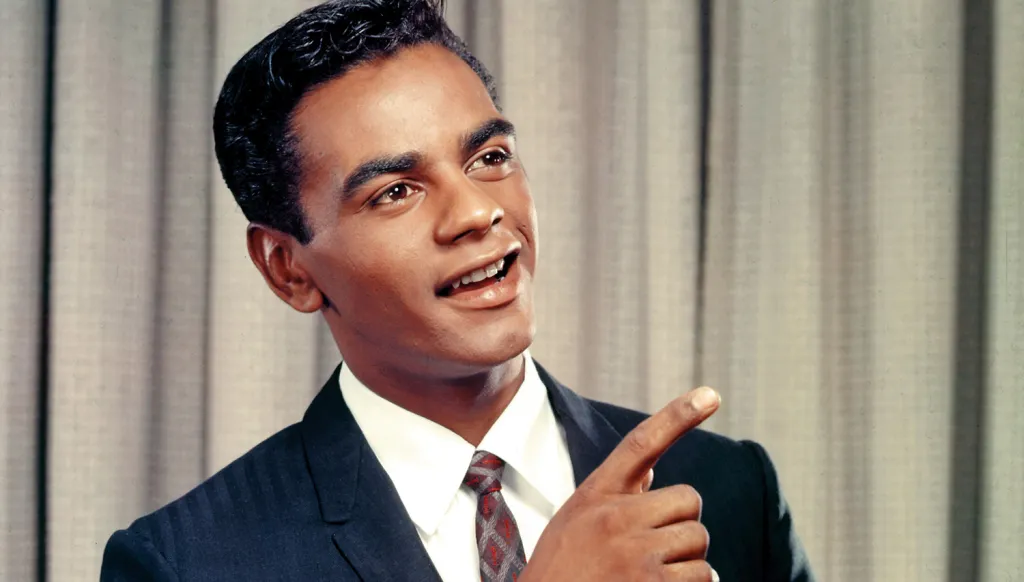
Johnny Mathis: The Velvet Voice That Time Couldn’t Fade
In an era defined by reinvention, very few artists have remained as gracefully timeless as Johnny Mathis. With a voice as smooth as silk and a heart rooted in jazz, Mathis charted a path few dared to follow—and none have ever replicated.
A Jazz Dreamer Turned Pop Legend
Born with an ear for elegance, Johnny Mathis initially dreamed of joining the ranks of jazz legends like Ella Fitzgerald and Sarah Vaughan. While attending San Francisco State College, he juggled academics with nightclub gigs on weekends, singing jazz standards with a local band. It was during one of these performances that fate intervened—a club owner introduced him to Columbia Records’ jazz executive George Avakian.
By 1956, Mathis was in New York, recording his debut album Johnny Mathis: A New Sound in Popular Music. Though the record quietly faded, Mitch Miller at Columbia recognized something more commercial in Mathis’ voice. His instinct proved prophetic.
Soon, Mathis recorded “Wonderful! Wonderful!” and “It’s Not for Me to Say”, both of which soared on the charts and became instant classics. The reluctant jazz crooner was now a pop idol.
The Invention of a Music Industry Staple
In 1958, Columbia compiled Mathis’ early hits into a collection titled Johnny’s Greatest Hits. It was a bold move—“greatest hits” albums weren’t a thing yet. But this gamble became a revolution. The album spent over nine years on the Billboard charts, setting a precedent for countless compilations to follow.
A Reluctant Star and Unforgettable Ballads
Though Mathis delivered iconic songs like “The Twelfth of Never” and “Misty,” he admitted he never felt an emotional pull to them. He once confessed he found “The Twelfth of Never” too repetitive, and only agreed to record “Misty” after pianist Erroll Garner showed up with lyrics in hand, expecting the vocalist to keep his promise.
Yet, despite personal reservations, Mathis’ renditions became defining pillars of American music.
Battles Behind the Curtain
Success didn’t shield him from struggle. During the 1960s, Mathis suffered from addiction linked to infamous celebrity doctor Max Jacobson, who treated him with amphetamine-laced injections under the guise of vitamin therapy. The treatment led to a dependency that briefly hospitalized the singer. In the 1980s, under the guidance of Nancy Reagan, a close friend, Mathis entered a rehabilitation center and reclaimed his health and voice.
Love, Privacy, and Courage
In an era where being openly gay could destroy careers, Mathis kept his private life tightly guarded. A 1982 Us Weekly profile quoted him as saying:
“Homosexuality is a way of life that I’ve grown accustomed to.”
But the backlash was swift and severe. He received death threats and was forced to retract the statement, withdrawing further fr
A Disco Detour a
In the late ’70s, Mathis found an unexpected resurgence with Deniece, recor“Too Much,. It was a joyful acciddisco with I Love, produced byChic duo Bernard Edwards and Nile Rodge
Unfortunately, the album was shelved by Columbia, deemed too risky. It wouldn’t see the light of day until 2017, inThe Voice of Romance box set.
A Life Beyond the Stage
Johnny Mathis isn’t just a singer. He’s also a golf enthusiast, once beating a younBill Russell in a high jpass, often preparing elaborate meals foCooking for.
The Legacy of a Quiet Giant
From Billboard charts to Olympic trials, from quiet dinners to grand stages, Johnny Mathis has lived many lives within one. He didn
A legacy of elegance, sincerity, and timeless beauty.
